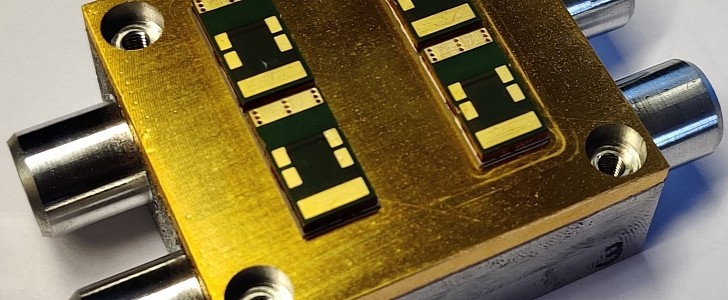There’s a lot of buzz and controversy when it comes to humanity completely making the shift towards electric vehicles. One of the main topics of debate is the performance of electric cars, which is more or less limited by the battery capacity. But experts now show us that there are other factors to focus on when it comes to improving the range of EVs.
A team of German scientists from the Fraunhofer Institute for Reliability and Microintegration IZM in Berlin explain that the battery is not the only culprit when it comes to how far your electric car can go. The driver train is another important component to look at.
In a project called SiCeffizent, the researchers are working on redesigning the power inverter and promise a 6% boost in range, according to Eugen Erhardt, who is responsible for the project.
For this to be achieved, they are using more energy-efficient semiconductors for the transistors. The semiconductors are made of silicon carbide (SIC) and as the electric current flows through them, they don’t dissipate as much power. A lot of our normal driving actions cause the inverter to lose power, such as driving at high speeds or braking. The reason why that happens is that the electric current keeps on flowing back and forth between the car’s motor, inverter, and the battery. But with the semiconductors used by the experts at Fraunhofer, these losses are reduced.
However, these semiconductors are quite pricey, so scientists have to keep the number of transistors to a minimum. A smaller number also means they’ll disperse more power and their temperature will go up more intensely. The solution is to maintain the semiconductor both cool and at the same power loss rate. So researchers redesigned the cooling elements of the inverters, using 3D printing.
With this new design, the cooling elements have a different, more practical structure with thinner walls, and the transistors are positioned closer to the cooling water. The lifespan of the semiconductors is also increased.
The team plans to create a prototype and test it over the following months, in partnerships with Robert Bosch and Porsche.
In a project called SiCeffizent, the researchers are working on redesigning the power inverter and promise a 6% boost in range, according to Eugen Erhardt, who is responsible for the project.
For this to be achieved, they are using more energy-efficient semiconductors for the transistors. The semiconductors are made of silicon carbide (SIC) and as the electric current flows through them, they don’t dissipate as much power. A lot of our normal driving actions cause the inverter to lose power, such as driving at high speeds or braking. The reason why that happens is that the electric current keeps on flowing back and forth between the car’s motor, inverter, and the battery. But with the semiconductors used by the experts at Fraunhofer, these losses are reduced.
However, these semiconductors are quite pricey, so scientists have to keep the number of transistors to a minimum. A smaller number also means they’ll disperse more power and their temperature will go up more intensely. The solution is to maintain the semiconductor both cool and at the same power loss rate. So researchers redesigned the cooling elements of the inverters, using 3D printing.
With this new design, the cooling elements have a different, more practical structure with thinner walls, and the transistors are positioned closer to the cooling water. The lifespan of the semiconductors is also increased.
The team plans to create a prototype and test it over the following months, in partnerships with Robert Bosch and Porsche.

